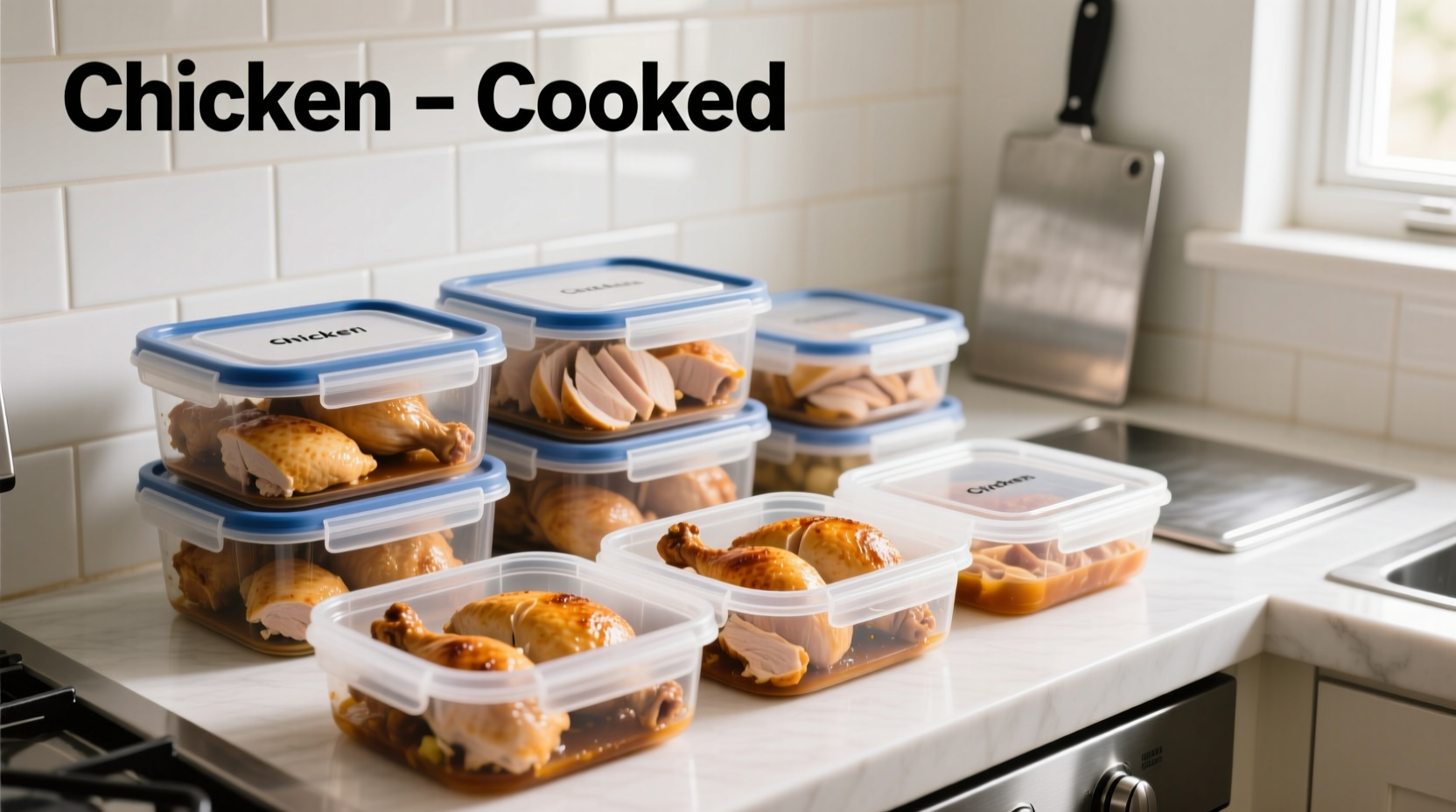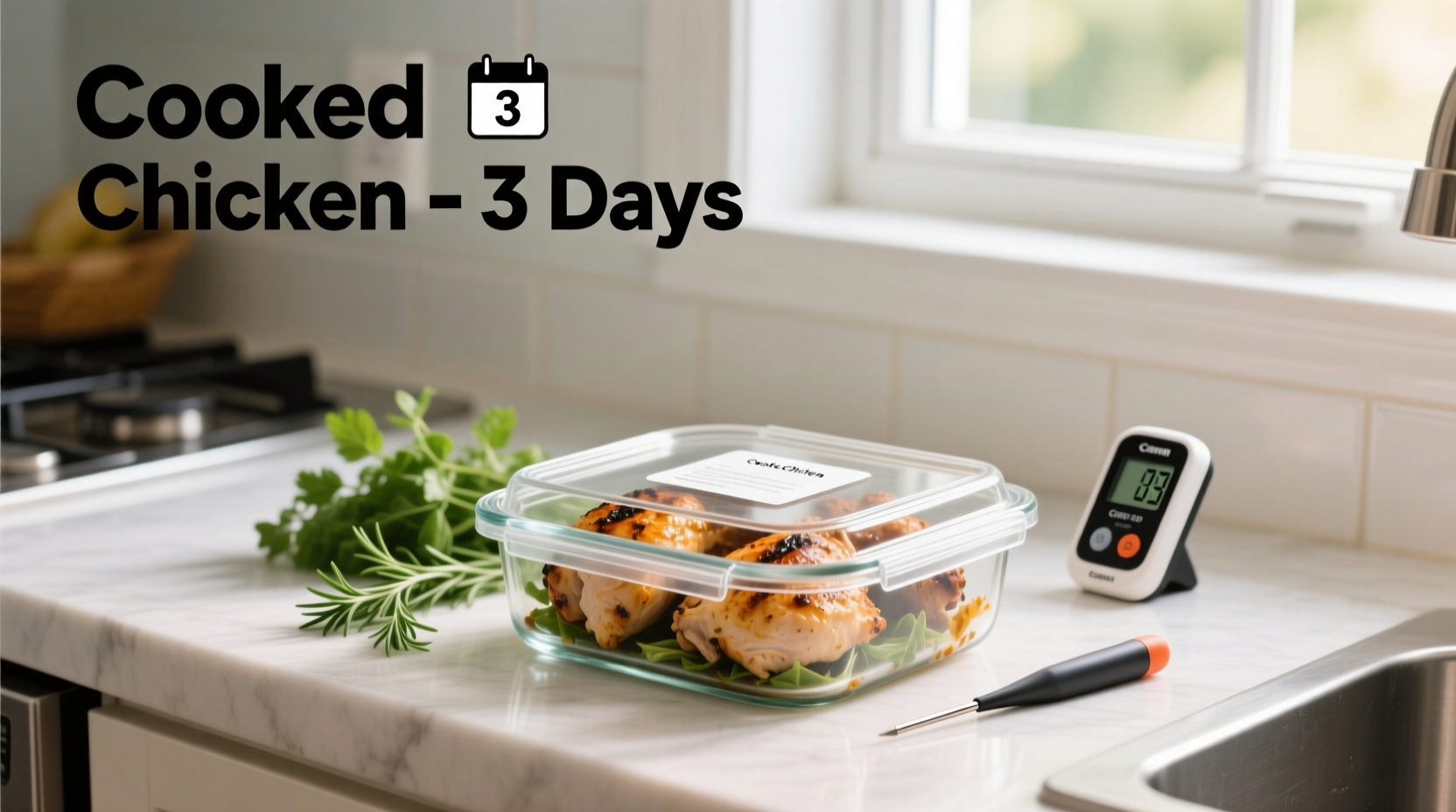Why the 3-4 Day Rule Matters for Your Safety
Understanding proper cooked chicken storage isn't just about avoiding wasted food—it's critical for preventing foodborne illness. The USDA Food Safety and Inspection Service confirms that cooked poultry enters the temperature danger zone (40°F-140°F) where bacteria multiply rapidly after the fourth day. Their research shows that even refrigerated cooked chicken develops unsafe levels of pathogens like salmonella and listeria beyond this window.
Factors That Determine Your Cooked Chicken's Shelf Life
While the 3-4 day rule serves as your baseline, several factors influence how long your specific leftovers remain safe:
Storage Temperature Consistency
Your refrigerator must maintain a consistent 40°F (4°C) or below. The FDA Food Code specifies that every hour above this threshold reduces safe storage time. Use an appliance thermometer to verify your actual temperature—many household refrigerators run warmer than their display settings indicate.
Initial Cooking Temperature
Chicken cooked to the proper internal temperature of 165°F (74°C) has fewer surviving bacteria at the start of storage. Undercooked chicken enters refrigeration with higher bacterial loads, accelerating spoilage.
Storage Method Quality
Airtight containers prevent cross-contamination and moisture loss. Shallow containers (no deeper than 2 inches) cool faster and more evenly than deep dishes, reducing the time chicken spends in the danger zone during cooling.
| Poultry Product | Refrigerator Storage (40°F or below) | Freezer Storage (0°F or below) |
|---|---|---|
| Cooked chicken (whole pieces) | 3-4 days | 4 months |
| Cooked chicken (casseroles/soups) | 3-4 days | 6 months |
| Raw chicken parts | 1-2 days | 9 months |
| Raw whole chicken | 1-2 days | 1 year |
Source: USDA Food Safety and Inspection Service guidelines updated 2025
Proper Cooling Techniques That Extend Safety
How you cool cooked chicken dramatically impacts its safe storage window. Never place hot chicken directly in the refrigerator—this raises the internal temperature of your appliance. Instead:
- Divide large quantities into shallow containers (2 inches deep or less)
- Cool to 70°F within 2 hours using an ice bath for soups or broths
- Use the "two-hour rule": refrigerate within 2 hours of cooking (1 hour if room temperature exceeds 90°F)
- Store in the main compartment of your refrigerator, not in the door where temperatures fluctuate

Signs Your Cooked Chicken Has Spoiled
Before consuming leftovers, perform these safety checks. Trust your senses—don't rely solely on the calendar:
- Texture change: Slimy or sticky surface film indicates bacterial growth
- Odor shift: Sour, ammonia-like, or sulfur smells replace normal chicken aroma
- Color alteration: Grayish hue or greenish spots appear on the surface
- Mold presence: Any visible mold means immediate disposal of the entire batch
The USDA emphasizes that "when in doubt, throw it out" applies strictly to poultry products. Pathogenic bacteria that cause food poisoning don't always produce noticeable changes in appearance or smell.
Common Misconceptions About Cooked Chicken Storage
Several persistent myths could put your health at risk:
- "If it smells okay, it's safe": Pathogens like listeria produce no odor but cause serious illness
- "Reheating kills all bacteria": While proper reheating (165°F) destroys live bacteria, it doesn't neutralize heat-stable toxins already produced
- "The 5-day rule is acceptable": Research from the National Institute of Food and Agriculture shows significant pathogen growth by day 5 even in properly refrigerated chicken
Extending Shelf Life Through Freezing
When you can't consume cooked chicken within 3-4 days, freezing provides a safe alternative. For best results:
- Vacuum-seal portions to prevent freezer burn
- Label containers with contents and freezing date
- Use within 4 months for optimal quality (safe indefinitely but quality degrades)
- Thaw in refrigerator, not at room temperature
The CDC confirms that freezing halts bacterial growth completely, making it the only reliable method to extend cooked chicken's safety beyond the 4-day refrigeration window.
Special Considerations for Different Chicken Preparations
Certain preparations have unique storage considerations:
- Chicken salad: Mayonnaise-based salads last only 3-5 days due to additional ingredients
- Soups and stews: Acidic ingredients like tomatoes can extend safety to 5 days
- Breaded chicken: Crust traps moisture, potentially reducing shelf life to 3 days
- Rotisserie chicken: Commercially prepared versions often contain preservatives extending safety to 4 days
Practical Food Safety Checklist
Follow these steps for maximum safety with cooked chicken leftovers:
- Cook to 165°F internal temperature using a food thermometer
- Cool rapidly to 70°F within 2 hours
- Store in airtight containers in main refrigerator compartment
- Label containers with cooking date
- Consume within 3-4 days or freeze immediately
- Reheat to 165°F before eating
- Discard if any signs of spoilage appear











 浙公网安备
33010002000092号
浙公网安备
33010002000092号 浙B2-20120091-4
浙B2-20120091-4